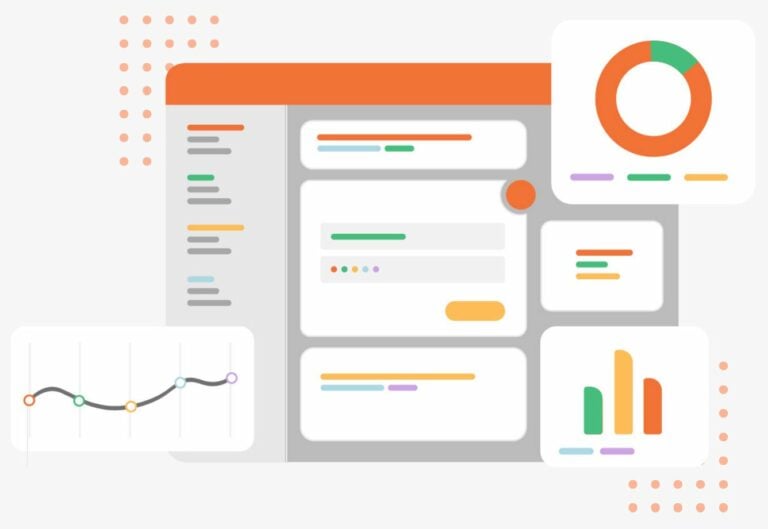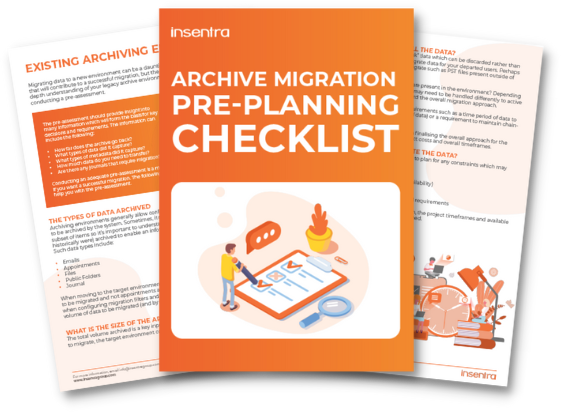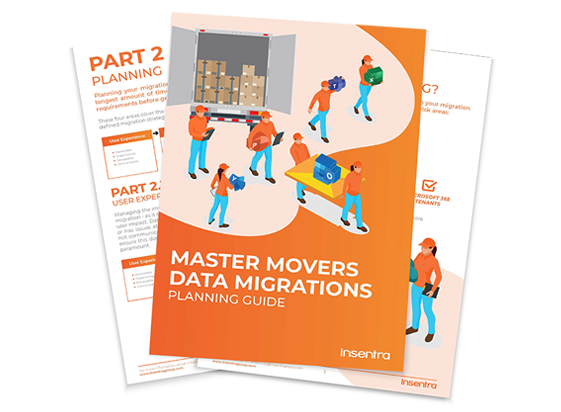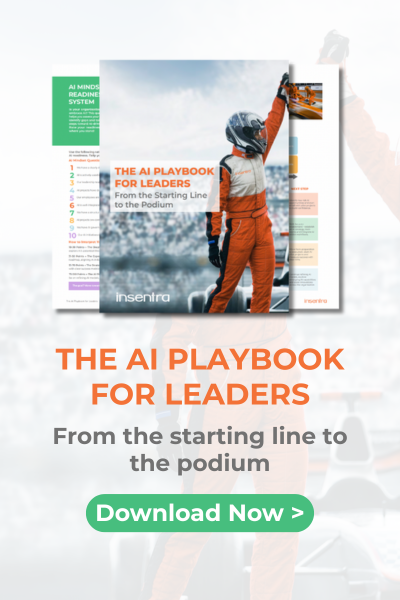Empower your Decisions:
Mastering Business Intelligence with Power BI
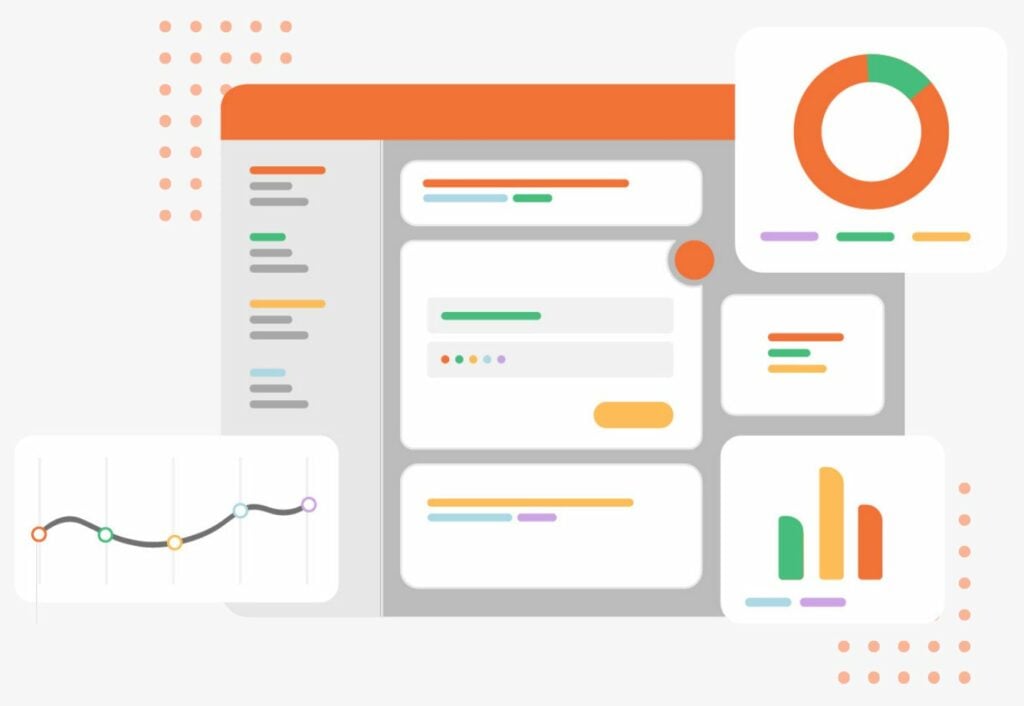
SETTING THE STAGE: RETHINKING DECISION-MAKING AT THE C-LEVEL
In executive boardrooms where critical company decisions are made, there’s significant pressure. Every choice has consequences, influencing not just their immediate teams but potentially the entire business. Simply relying on past practices and gut feelings to make decisions isn’t enough in today’s competitive world.
Historically, decisions were grounded in personal experiences, individual observations, or industry norms. While these remain important, they might not catch everything. For instance, there might be hidden trends yet to be seen or subtle factors affecting profitability.
This is where Business Intelligence (BI) comes into play. Let’s consider for a moment how BI can be applied to the Pareto Principle. Often referred to as the 80/20 rule, the Pareto Principle suggests roughly 80% of effects come from just 20% of the causes. By leveraging BI, the crucial 20% can be brought into the light and clearly identified. So, rather than relying purely on gut feelings or past experiences, leaders can focus in on the crucial 20% to yield the highest results.
At the end of the day, it’s about enhancing past practices and gut feeling with modern tools. Combining time-tested approaches with fresh data driven insights is truly impactful. As the world embraces BI and data-driven decision making, it’s imperative for leaders to understand and adapt to this new way of decision making.
BUSINESS INTELLIGENCE UNVEILED FOR C-LEVEL EXECUTIVES
In today’s fast-paced business environment, access to timely and accurate information is a top priority. For senior executives whose responsibility is to guide their organizations towards success, this information is essential in developing strategies. BI offers a systematic approach to obtaining this critical information.
BI goes beyond data collection. BI is about turning vast volumes of data into actionable insights. For a senior executive, BI can provide a comprehensive view of the organization, a deeper understanding of functional areas, as well as a glimpse into potential opportunities. BI serves as a solid foundation for strategic decisions, ensuring choices are data driven.
One of the advantages of BI is its ability to align organizational goals with tangible strategies. When an organization has a specific vision, there is a tendency to rely on broad industry trends or boardroom feedback to develop strategies. In contrast, BI allows for a more detailed analysis of customer behaviors, specific market trends, and the competitive landscape. By leveraging BI to develop strategies, directions chosen by senior executives become driven by data, and therefore, increase the likelihood of achieving strategic objectives.
For today’s senior executives, BI is an indispensable asset. It clarifies complexities, offers direction, and underscores the importance of data-driven decision-making in modern business strategy. As we dive further into the capabilities of BI, its role in developing successful strategies becomes undeniably clear.
POWERING UP WITH POWER BI: A PRIMER
In the current data-centric business landscape, It is essential to possess effective tools for deciphering extensive data. Microsoft Power BI (PBI) is rapidly emerging as the favored solution for enterprises in search of robust capabilities in data visualisation and analytics. Power BI (PBI), the BI offering from Microsoft, is quickly becoming the preferred choice for businesses seeking robust data visualisation and analytics capabilities.
PBI stands out primarily due to its user-friendly interface which enables users to quickly turn complex data sets into insightful visuals and reports. PBI does not require users to have an extensive background in complex programming languages. Users with Microsoft Excel experience can quickly learn to create PBI reports.
Comparing PBI to traditional BI tools highlights several advantages. One of the most significant benefits is its integration capabilities. PBI can natively connect data from hundreds of sources, such as Excel spreadsheets, cloud databases, and other enterprise applications like Salesforce and Google Analytics. This ability to bring data together from different sources means organizations can bridge data traditionally held in silos.
Another impressive feature of PBI is real-time data streaming. For an organization that requires immediate access to data in real-time, PBI is a fantastic tool. Whether it’s a financial institution looking to track real-time stock prices, a marketing company monitoring a client’s website visits, PBI enables them to see this data as it happens.
Another critical area where PBI shines is its visuals. The tool offers a range of visualizations, from line charts and bar charts to maps. These native visuals make it far easier to identify patterns, trends, and of course, make quicker and more informed decisions.
PBI is more than just an analytics tool. It is comprehensive BI solution designed for automation, collaboration, and security. As we progress further into the different aspects of PBI, you will discover how it can be an invaluable asset in guiding informed and effective business strategies.

DATA TRANSFORMATION: CRAFTING THE INGREDIENTS
In the realm of BI, data transformation is very similar to the meticulous steps a chef takes in the kitchen. From selecting quality ingredients to the final presentation on the plate, every stage demands precision, care, and expertise. Data undergoes a similar process. Transforming data is a process of collection and preparation to combination and serving, ensuring the data is primed for insightful consumption.
Here’s a breakdown of the key stages in data transformation:

Collect: Much like sourcing the freshest ingredients, data collection involves gathering relevant and high-quality data. This is the foundational step, where data is extracted from various sources. The key is to ensure accuracy and relevance to the 1 subsequent stages.

Prepare: Once in the kitchen, a chef meticulously cleans and prepares ingredients, removing any unwanted parts. Similarly, data needs to be cleansed and refined. This involves identifying and correcting errors, eliminating duplicates, and addressing missing or inconsistent values. Properly prepared data ensures accuracy in the ensuing analysis.

Combine: Just as ingredients are combined based on a recipe, data from various sources is merged and integrated. Whether it is aligning data from different departments or integrating insights from different systems, this phase ensures data speaks a common language, ready for comprehensive analysis.

Serve: A chef’s final task is to present the dish in an appetizing manner. In the BI context, this means visualising and presenting data in a way that is easily digestible and insightful for senior executives. This could be through dashboards, charts, graphs, or reports tailored to deliver the most meaningful insights.
Traversing the varied terrain of data sources and formats presents a considerable hurdle. Whether dealing with traditional on-premises relational databases or cutting-edge cloud data platforms, and whether it’s CSV files or unstructured text files, Business Intelligence (BI) tools, particularly platforms such as Power BI (PBI), are adept at managing this diversity. They not only collect data from numerous sources but also simplify the transformation process, preparing it for meaningful analysis and interpretation.
Data transformation is a meticulous process of turning raw data into actionable insights. Just as culinary expertise is prerequisite to converting raw ingredients into a gourmet dish, in the world of BI, expertise in data transformation ensures that raw data is sculpted into meaningful, actionable information. This refined data then becomes the bedrock upon which senior executives base their strategic decisions, ensuring they are made with clarity, precision, and a foundation of solid evidence.
ELEVATING STRATEGIC DECISION-MAKING: THE POWER OF BUSINESS INTELLIGENCE (BI)
At the heart of an organization’s strategic direction lies a critical point where the important strategic decisions need to be made. Decisions made at this point hold far-reaching implications for the entire organization, demanding a blend of expertise, experience, and concrete evidence. It is here BI emerges as the tool to assist in these vital decision-making moments with data-driven insights.
STRATEGIC IMPACT OF BI

Informed Decision Making: Gone are the days when decisions were based solely on intuition or past trends. With BI, executives have a realtime view of market conditions, operational efficiencies, and the competitive landscape. BI helps to ensure decisions are not just informed, but proactively aligned with current realities.
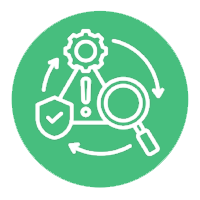
Risk Management: By identifying patterns, anomalies, and potential shifts, BI aids in anticipating challenges. This proactive approach allows for strategies to not only address current issues but also mitigate future risks.

Resource Optimization: BI tools provide clear insights into organisational resource allocation, such as workforce, capital investments, or operational expenditures. As with Pareto Principle example, BI helps in directing resources where they will yield the most significant impact, ensuring optimal Return on Investment (ROI).

Customer and Market Insights: Deep dives into customer behaviors, preferences, and feedback can inform product development, marketing strategies, and customer relationship management. This customercentric approach, powered by BI, ensures organizations stay ahead of market demands.
GUIDELINES FOR EMBEDDING BI INTO STRATEGIC PLANNING
- Prioritise Data Culture: Foster a culture where data-driven insights are not just encouraged but are integral to the decision-making process. This involves continuous training and emphasising the importance of data in strategic deliberations
- Collaborate with IT: Ensure a seamless collaboration between the IT department and the C-Suite. The IT team plays a fundamental role in setting up, maintaining, and updating BI tools, making them indispensable in the integration process
- Regularly Update and Review: The world of business is dynamic. Regularly update BI tools to include new data sources, and consistently review insights to ensure they align with the organization’s evolving objectives
- Feedback Loop: Establish a feedback mechanism where the outcomes of decisions, once implemented, feed back into the BI system. This ensures continuous learning and refinement of strategies
Integrating BI doesn’t just enhance decisions. It transforms the strategic landscape of the organization. When every decision is backed by robust data and insights, it paves the way for innovation, growth, and a competitive edge in the market.
ADOPTING A DATA-DRIVEN CULTURE
The digital age has underscored the significance of data as a crucial asset for organizations. However, merely accumulating data is not enough. The real value lies in refining the data. To truly take advantage of the benefits of BI, organizations must embrace a data-driven culture. This involves viewing data as an asset for decision-making at every level of the organization.

ESTABLISHING A DATA CULTURE FOR BETTER BI UTILISATION
- Leadership Endorsement: Senior executives should champion the importance of data, setting the tone for the entire organization. When leadership prioritizes data-driven decision-making, it becomes an ingrained aspect of the organization’s way of working
- Continuous Education: Regular training sessions on BI tools and data literacy should be held. This ensures employees at all levels understand the value of data and have the necessary skills to harness its potential
- Encourage Curiosity: A culture where questions are encouraged, and data is used to find answers can spur innovation. It fosters an environment where data becomes the go-to resource for problem-solving

IDENTIFYING GOALS AND ALIGNING BI EFFORTS
- Clear Objectives: Clearly define what the organization aims to achieve with its BI efforts. Whether it is enhancing customer satisfaction, streamlining operations, or predicting market trends, having well-defined goals ensures focused efforts
- Performance Metrics: Establish metrics to monitor and measure the success of BI initiatives. These should directly correlate with the organization’s broader objectives
- Regular Reviews: Periodically assess the alignment between BI insights and organizational goals. This ensures BI efforts remain relevant and adaptive to changing business dynamics

SELECTING APPROPRIATE TOOLS AND SYSTEMS
- Assess Needs: Before selecting any BI tool, comprehensively assess the organization’s requirements. Consider factors like data volume, sources of data, and desired output formats
- Scalability: Consider BI systems can grow with your organization. As data needs evolve and expand, the chosen data and BI platform should be able to accommodate this growth without compromising efficiency
- Integration Capabilities: The chosen BI tool should seamlessly integrate with existing systems, ensuring smooth data flow, and minimizing operational disruptions
In conclusion, adopting a data-driven culture is not a mere trend. It is a strategic imperative in the modern business world. By placing data at the heart of decision-making, organizations not only enhance their operational efficiency but also position themselves to proactively navigate future challenges and opportunities.
NAVIGATING BI ADOPTION: A C-LEVEL ROADMAP
For the C-suite, adopting BI is key for making informed decisions to shape the entire organization’s future path. Integrating BI requires a structured approach, best understood in three distinct phases: Discovery, Planning, and Implementation.

DISCOVERY
- Assessment of Current Landscape: Dive deep into understanding the organization’s current data landscape and reporting capabilities. Identify what data is available, its sources, and the tools currently in use
- Vision Setting: Set clear goals for what you aim to achieve with BI. This could be improving operational efficiency, gaining deeper market insights, or predicting future trends
- Identify Challenges: Understand potential roadblocks, such as data silos, resistance to change, or system compatibility issues

PLANNING
- Selecting the Right Tool: Based on insights from the discovery phase and keeping in mind the organization’s unique needs and goals, choose a BI tool. Key factors to consider include scalability, integration capabilities, user-friendliness, and cost
- Data Infrastructure Optimization: With the selected tool in mind, ensure current data infrastructure is compatible. This might involve consolidating data sources, ensuring uniformity in data formats, and upgrading existing systems
- Team Training Strategy: Plan a comprehensive training program. It is crucial the C-suite and relevant stakeholders and teams not only know how to use the chosen BI tool but also understand the generated insights
- Phased Deployment Approach: Instead of an organisation-wide rollout, consider a phased deployment. Initiate with a pilot program in a specific department or for a particular function, gather feedback, and refine the approach

IMPLEMENTATION
- Rollout: Based on feedback from the pilot program, initiate a broader rollout. Ensure all users have access to the necessary resources and support.
- Ongoing Training and Support: As the tool is adopted, continuous training and support mechanisms should be in place to address queries and enhance proficiency
- Regular Review and Refinement: Set up periodic reviews to evaluate the effectiveness of the BI tool in achieving the set goals. Make necessary adjustments and refinements based on these evaluations
- Stay Updated: The BI world is dynamic. Ensure you keep up to date with the new features of the tool you are using, and periodically reassess to see if a different tool might better serve your needs
In conclusion, adopting BI at the C-suite level should be agile. The landscape of data and technology is constantly evolving, and therefore, so should your approach to BI. By following the steps of Discovery, Planning, and Implementation, senior executives can ensure a smooth and efficient BI integration, positioning their organization for data-driven success.
ENVISIONING THE FUTURE: THE ROLE OF C-LEVEL EXECUTIVES IN A DATA-DRIVEN ERA
The advent of the digital age has ushered in a substantial transformation in the business environment. The abundance of data and sophisticated tools to leverage it is reshaping the landscape of decisionmaking. In this swiftly evolving context, the importance of C-level executives has never been more pivotal.
EVOLVING LANDSCAPE OF DECISION-MAKING

From gut feeling to data-driven While intuition and experience remain valuable, decisions in the modern age are increasingly relying on reliable data. With real-time insights at their fingertips, C-Level executives can make proactive, predictive, and informed choices.

Complexity and Speed: The modern business environment is dynamic and constantly changing. This demands decisions to be agile. They need to be made quickly but also flexible enough for course correction as new data becomes available.

Interconnected Decisions: The interconnected nature of businesses today means decisions in one area can have ripple effects across the organization and even across industries. This makes comprehensive data analytics invaluable, providing a 360-degree view of potential impacts.
Data will continue to be the cornerstone of strategic decision making and a competitive advantage. C-Level executives, as stewards of this vision, have a critical role to play. By championing a data-driven culture, they not only steer their organizations towards success in the present but also lay the foundation for the challenges and opportunities of tomorrow.

INSENTRA’S ROLE IN EMPOWERING BI WITH POWER BI
Now that a migration plan exists that defines the scope and objectives of the migration, what data needs to migrate, risks and challenges involved in the process, and the specific activities to execute, testing must be performed to validate the processes and increase the odds of a successful migration.
Migration testing is a crucial step in any tenant migration project. It ensures the data is transferred accurately and efficiently and confirms the destination tenant is set up properly. The recommended approach is to draft a test plan with test cases.
A test plan is a document outlining the testing approach, methodology, resources, roles, and responsibilities. A test case is a set of instructions which specify what to test, how to test it, and what results to expect. Test cases are used to:
- Understand the destination tenant from a functional standpoint
- Determine the user experience regarding the destination tenant
- Find any defects that may have been caused by the migration process
- Work as acceptance criteria for the project
Test cases should be designed to cover the components directly affected or impacted by the migration, for example:

END-TO-END BI SERVICES: FROM STRATEGY TO EXECUTION
- Strategic Services: Insentra recognises the significance of a foundational BI strategy. Our team collaborates with organizations to develop BI objectives, ensuring they seamlessly match up with business aspirations. This involves Discovery, Planning, and Implementation of an organization’s BI Strategy
- Tactical Services: Insentra’s tactical services are geared towards saving time, effort, and money. We employ best practices like the Hybrid Agile Methodology, which combines the flexibility of agile with the structure of traditional methodologies, ensuring BI projects are completed efficiently and utilise best practices. Additionally, with the utilisation of PBI Theme files and templates, organizations can achieve consistency in reporting and visualisations, streamlining the BI process and ensuring brand coherence
- Operational Services: Insentra understands the real work often begins after the initial BI tool is chosen. Our Operational services focuses training, co-development, and the creation of PBI reports. Our tailored training programs ensure the learning material is matched to the student’s level. Our co-development approach is collaborative, ensuring the BI solutions are developed with the goal of increasing student capability. At the core of our Operational Services is the development of Proof of Value (POV) reports, where we take on the burden of creating PBI reports to save organizations time, money, and resources

ELEVATING BI OUTCOMES WITH EXPERT GUIDANCE
- Customized Solutions: Every organization is different with its own set of challenges and objectives. Insentra dives into these differences, creating PBI solutions to meet the organization’s unique requirements
- Capacity Building: Beyond BI strategy and tactics, Insentra prioritises capability uplifting. Through our learn, look, and do approach to training, students increase their PBI skills quickly and efficiently
- Innovative Approaches: With an ear to the ground, Insentra is always in tune with industry shifts and technological advancements. We consistently refresh our methodologies, visualisation tactics, and integration strategies, ensuring organizations are always at the BI forefront
CONCLUSION: EMPOWERING THE C-SUITE THROUGH DATA INSIGHTS
As we reach the conclusion of this exploration into BI and its integration with PBI, several crucial points come to the forefront.
KEY TAKEAWAYS AND ACTIONABLE INSIGHTS

Data-Driven Decision Making: The era of basing decisions purely on instinct or historical trends has evolved. Today, with the vast amount of data at our disposal, the power of informed decision-making cannot be overstated. C-Suite executives, more than anyone, need these insights to guide organizations toward sustainable growth and success.

End-to-End BI Journey: From strategy to execution, the BI journey is comprehensive. Insentra’s methodical approach, encompassing strategic, tactical, and operational services, offers a holistic solution that ensures not just BI adoption but also its effective utilisation.

Maximising Efficiency and ROI: With tools like PBI, the goal is not just data visualisation. It is about streamlining processes, achieving consistency, and optimising resources. Techniques like the Hybrid Agile Methodology and the use of theme files exemplify the drive towards efficiency, ensuring time, effort, and money are used appropriately.

Continuous Learning and Adaptation: The BI landscape is ever evolving. Training, codevelopment, and constant feedback loops ensure organizations remain agile, adapting to latest trends, challenges, and opportunities as they arise.
REINFORCING THE ROLE OF BI WITH POWER BI
PBI is not just another reporting tool. PBI is a game-changer. Its capabilities extend beyond simple data representation. By offering analytics, collaboration, integration, and user-friendly visualizations, PBI becomes an invaluable asset in the C-Suite’s arsenal. PBI enables leaders to view their organizations, anticipate changes, and make informed decisions.
The modern C-Suite is at a pivotal point in time. The challenges of today’s business environment are many, but so are the tools and strategies available to tackle them. By embracing a data-driven culture and leveraging the full power of BI, particularly with platforms like PBI, senior executives can steer their organizations with clarity, precision, and foresight. In this data-centric world, leaders who embrace BI to make data driven decisions will undoubtedly lead the way.
The time is now to embrace the transformational power of PBI. Just as a master chef meticulously sharpens their tools to craft culinary excellence, it’s time for you to refine your data strategy with the same precision and care. PBI isn’t merely a tool. PBI a comprehensive solution that merges analytics, collaboration, and user-friendly visualizations, enabling leaders to turn data into actionable business insights. In today’s dynamic business landscape, adopting a data-driven approach is crucial.
Seize this moment to elevate your organization’s data capabilities. Reach out to our Business Intelligence Consulting Services team to customize a PBI solution that aligns with your unique business needs.

ABOUT INSENTRA
WE DARE TO BE DIFFERENT
Insentra is a collaborative IT Services partner delivering specialized Professional and Managed Services.
Our Partner-centric model provides you direct access to industry expertise. We believe great business relationships start with trust. We are 100% channel focused meaning we only transact and deliver services exclusively with our Partners.
Our dedication to you is based on our vision to be the number one channel services company on the planet. We do this by being the best version of ourselves, creating an outstanding environment for our team, loving the work we do and amazing each other and our partners in every way.
We are and always will remain a PartnerObsessedTM company.
DOWNLOAD THE EMPOWER YOUR DECISIONS: MASTERING BUSINESS INTELLIGENCE WITH POWER BI EBOOK
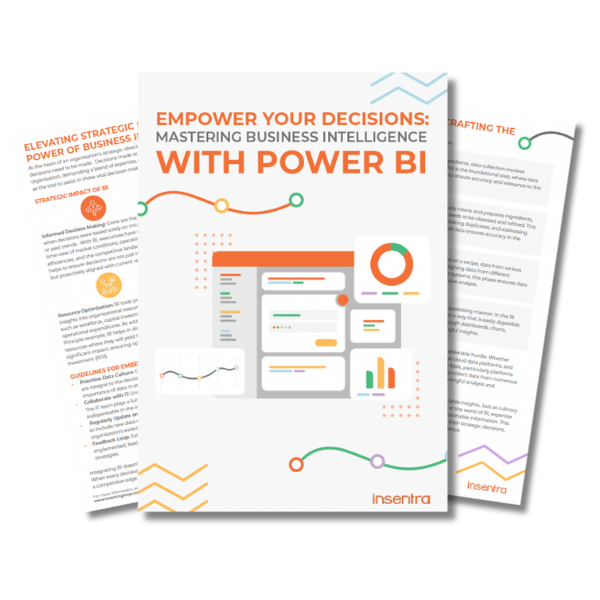
Thank you for downloading a Comprehensive Guide to Microsoft 365 Tenant Migrations.
We’ve sent a copy to your inbox. Remember to mark hello@insentragroup.com as a “safe sender”, and to check any junk or spam folders so you receive your copy.
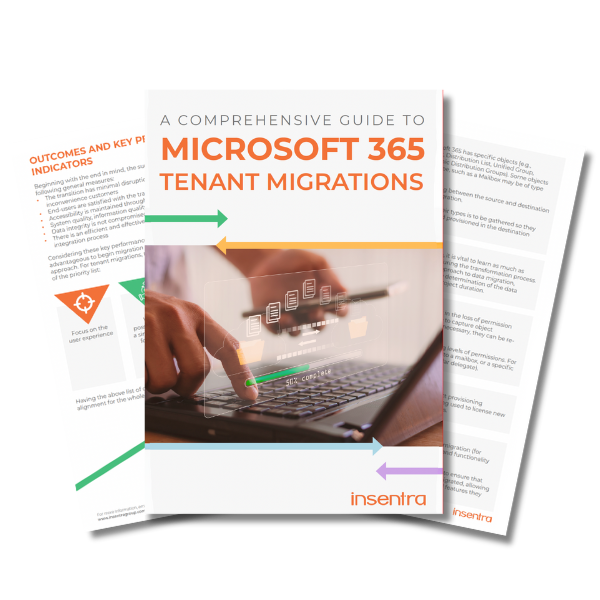

We’ve sent a copy to your inbox. Remember to mark hello@insentragroup.com as a “safe sender”, and to check any junk or spam folders so you receive your copy.
Consult Chat Discuss with our experts!
With the understanding that not all email archive migration projects are the same, our Email Archive Pre-Planning Assessment supports the diverse conditions found in organizations of all sizes, from enterprise environments to small businesses.
What kind of data are you migrating? Whether you are still in the planning phase or have begun your migration journey, you face a complex task.
According to a recent study conducted by Gartner, 83% of data migration projects either fail or exceed their budgets and schedules. It’s not a hidden fact that data migrations can be complex and stressful, however careful preparations will prove invaluable during the migration.

